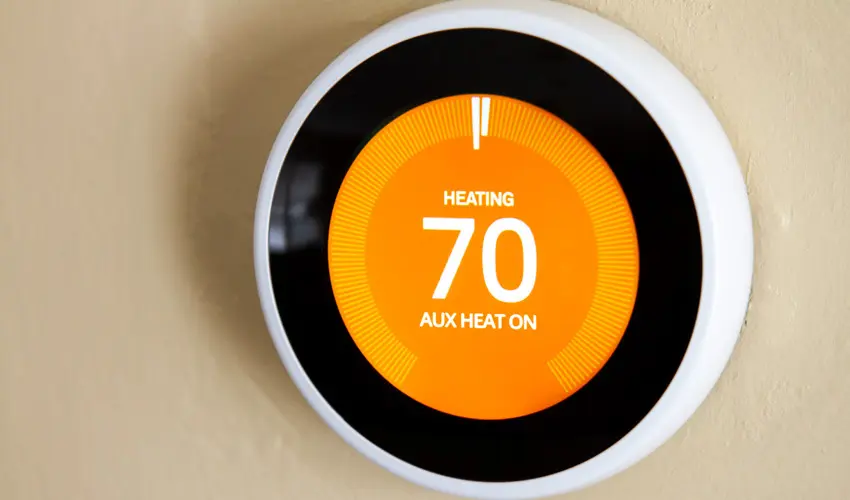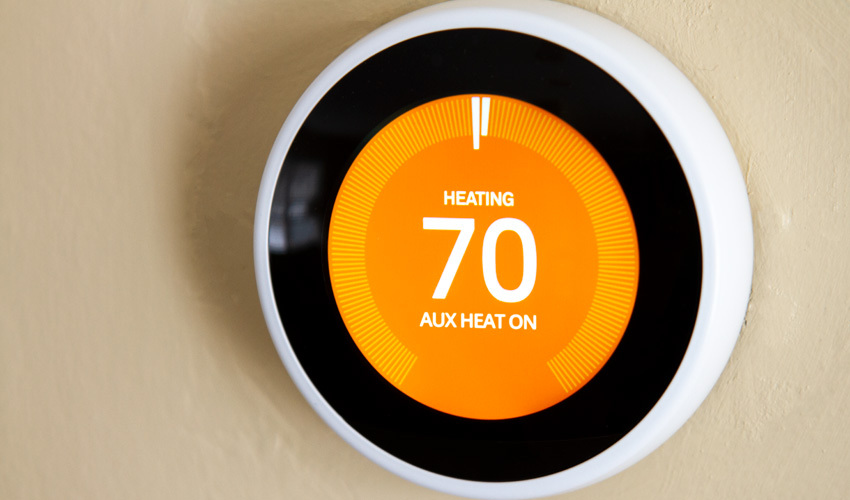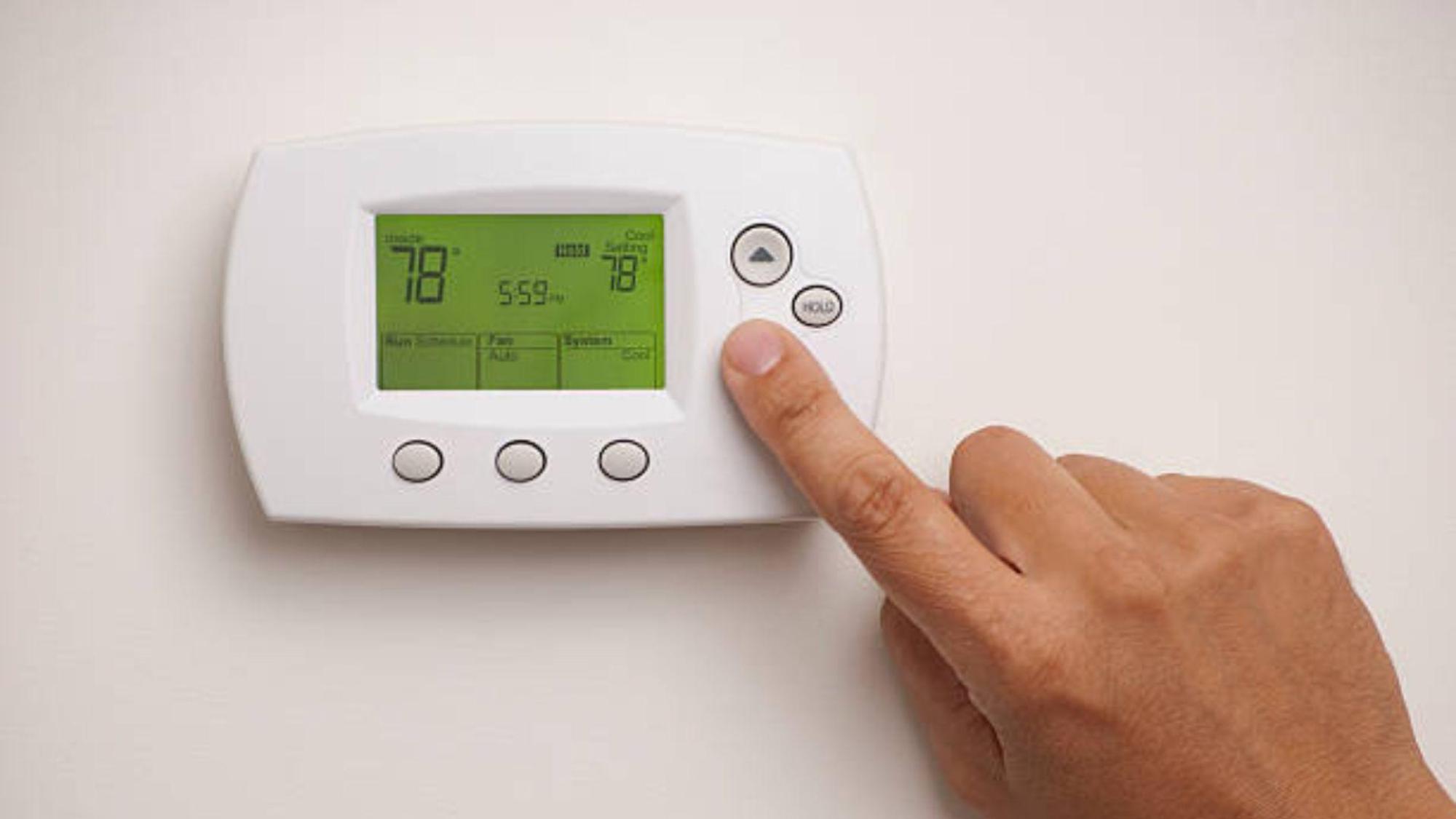Check Best Thermostat Pricing in Amazon
** As an Amazon Associate, I earn from qualifying purchases.
Aux heat on a thermostat means auxiliary heating. It’s a backup system.
When the main heating can’t keep up, aux heat kicks in. Understanding what aux heat means is important for managing your home’s temperature effectively. Many homeowners see the aux heat indicator but aren’t sure what it signifies. Essentially, aux heat is a secondary system that helps maintain warmth when the primary heating source struggles.
This typically happens during very cold weather. Knowing how and when aux heat operates can help you optimize your heating system and potentially save on energy costs. In this blog post, we’ll explore the specifics of aux heat and why it’s crucial for your thermostat and home comfort.
Aux Heat Basics
Understanding the basics of aux heat on your thermostat is important. Aux heat helps maintain your home’s comfort during extreme cold. It acts as a backup to your primary heating system.
Definition Of Aux Heat
Aux heat, short for auxiliary heat, kicks in when needed. Your heat pump works to warm your home. But sometimes, it needs help. This is where aux heat comes in. It activates when your heat pump can’t keep up with demand.
How Aux Heat Works
Aux heat uses electric resistance coils or a gas furnace. These provide extra heat. The thermostat senses the temperature drop. When it detects this, it turns on the aux heat. This ensures your home stays warm.
The aux heat system works automatically. You don’t need to adjust any settings. It turns on and off as needed. This keeps your home at the desired temperature.
Common Uses
Understanding the common uses of aux heat on your thermostat is essential. Aux heat, or auxiliary heat, provides backup heating for your home. It ensures you stay warm when your heat pump struggles to maintain the desired temperature. Let’s explore its common uses.
Emergency Heating
Aux heat acts as a vital emergency heating source. In extreme cold, heat pumps might not work efficiently. Aux heat kicks in to provide immediate warmth. This ensures your home stays comfortable even in severe weather. It prevents your pipes from freezing and protects your home.
Supplemental Heating
Aux heat also provides supplemental heating. Sometimes, heat pumps need help to reach the set temperature. Aux heat assists by providing additional warmth. This helps maintain a consistent indoor temperature. It ensures your comfort during those chilly days and nights.
Energy Efficiency
Energy efficiency is crucial in managing household heating costs. Understanding the role of auxiliary heat (aux heat) on your thermostat can help you achieve better energy efficiency. This section will explore how aux heat impacts energy bills and compare it to regular heat.
Impact On Energy Bills
Aux heat often uses more electricity than regular heat. This can lead to higher energy bills. When the temperature drops, aux heat kicks in to help the main heating system. It works quickly to warm your home but uses a lot of power. This spike in energy use can be costly.
To manage your bills, monitor your thermostat settings. Make sure aux heat is not running more than necessary. Proper insulation can also reduce the need for aux heat. Sealing windows and doors helps keep warm air inside. This means your heating system works less hard, saving you money.
Comparing Aux Heat To Regular Heat
Aux heat and regular heat serve different functions. Regular heat uses your main heating system. It is efficient and cost-effective under normal conditions. Regular heat maintains your home’s temperature steadily.
Aux heat is a backup. It activates when regular heat cannot keep up. This happens during very cold weather. Aux heat provides extra warmth quickly. But it is less efficient and more expensive to run.
Understanding the differences helps you manage your thermostat better. Use regular heat as much as possible. Rely on aux heat only when needed. This approach can lead to better energy efficiency and lower bills.

Credit: www.aireserv.ca
Ideal Settings
When it comes to understanding your thermostat’s aux heat mode, setting it correctly is key. Ideal settings ensure your home stays comfortable without running up your energy bill. Let’s break it down further:
Recommended Temperature Settings
First things first, you want to set your thermostat to maintain a comfortable temperature. During winter, 68°F (20°C) is a good target. It keeps your space warm without overworking your heating system.
At night or when you’re away, lowering the temperature to around 60°F (15°C) can save you money. This way, the auxiliary heat kicks in less frequently, conserving energy.
Remember, every degree you lower can save you up to 3% on heating costs. So, small adjustments can add up to significant savings over time.
Seasonal Adjustments
As seasons change, so should your thermostat settings. During fall, gradually decrease the temperature. This prepares your heating system for the cooler months without a sudden spike in usage.
In spring, do the opposite. Gradually increase the temperature as it gets warmer outside. This prevents your system from switching to aux heat unnecessarily.
Consider using a programmable thermostat. It automatically adjusts the temperature based on your schedule, ensuring your home is always at the ideal setting without you lifting a finger.
Have you ever noticed your aux heat kicking in unexpectedly? It might be because of sudden temperature drops or incorrect settings. Regular checks and adjustments can prevent this and keep your home cozy and efficient.
Check Best Thermostat Pricing in Amazon
** As an Amazon Associate, I earn from qualifying purchases.
What strategies do you use to manage your thermostat settings? Share your tips in the comments below!
Troubleshooting
Aux heat on a thermostat means the secondary heating system is active. This helps maintain the desired temperature when it’s very cold outside. It’s often used when the primary system can’t keep up with the demand.
Understanding what “Aux Heat” means on your thermostat is crucial. Sometimes, issues arise that need troubleshooting. This section will help you identify common problems and provide simple fixes.Common Issues
One common issue is the auxiliary heat running continuously. This can increase your energy bills. Another problem could be the aux heat turning on when it isn’t very cold outside. This can make your home less comfortable. Another frequent problem is the system not switching back to regular heat. This can lead to inconsistent temperatures. Each of these issues requires attention to ensure your heating system works efficiently.Simple Fixes
Start by checking your thermostat settings. Ensure it’s set to “auto” rather than “on.” This helps regulate when the aux heat activates. If the aux heat runs continuously, it could be a faulty thermostat. Try resetting your thermostat. Sometimes, the issue lies with the heat pump itself. Ensure it’s not blocked or dirty. Clean any debris around the unit. If the system doesn’t switch back to regular heat, inspect the wiring. Loose connections can cause malfunctions. Another simple fix involves checking your air filters. Dirty filters restrict airflow, causing the aux heat to run more often. Replace filters if they appear dirty. This can improve system efficiency. If problems persist, consult a professional. They can diagnose and repair more complex issues. Always ensure your heating system gets regular maintenance. This can prevent many common issues. “`
Credit: www.aireserv.com
Maintenance Tips
Maintaining your thermostat is essential for its efficient operation. Regular care ensures it works effectively, especially during cold weather when aux heat kicks in. Proper maintenance can save you money and keep your home comfortable.
Regular Check-ups
Inspect your thermostat monthly to ensure it functions correctly. Clean any dust or debris from the unit. Check the batteries and replace them if necessary. Ensure the settings are correct and the display is clear.
Professional Servicing
Schedule annual check-ups with a certified technician. They can inspect and service your entire HVAC system. A professional can identify and fix issues that you might miss. Regular servicing prolongs the life of your thermostat and heating system.
Technological Advances
Technology has transformed our daily lives, including how we control our home environment. Thermostats have evolved from simple temperature regulators to sophisticated devices. These advancements make managing indoor comfort more efficient and convenient.
Smart Thermostats
Smart thermostats are a prime example of technological progress. They connect to Wi-Fi, allowing remote control via smartphones. This feature ensures you can adjust your home’s temperature from anywhere. Smart thermostats also learn your schedule and preferences. Over time, they optimize heating and cooling patterns to suit your routine. This personalization enhances comfort and energy efficiency.
Energy-saving Features
Modern thermostats come with energy-saving features. These include programmable settings, which let you set specific temperatures for different times of the day. Some models have sensors that detect when a room is occupied. They adjust the temperature accordingly, ensuring no energy is wasted heating empty spaces. Other advanced features include weather tracking. The thermostat adjusts the indoor temperature based on the local weather forecast. These energy-saving features help reduce utility bills and environmental impact.
User Experience
Understanding what Aux Heat means on your thermostat can significantly enhance your user experience. It’s not just a technical term; it impacts your comfort and energy bills. Let’s delve into how real users perceive it.
Customer Reviews
Many customers find Aux Heat to be a lifesaver during extreme cold. They appreciate how it kicks in automatically. “I never have to worry about waking up to a freezing home,” says Jane from Minnesota.
Others mention the cost implications. While convenient, Aux Heat can be more expensive. “My energy bill spiked when Aux Heat was on for too long,” warns Mark from New York.
Reading customer reviews can give you a balanced view. Some love the convenience, while others are wary of the costs. What do you prioritize—comfort or savings?
Real-life Examples
Consider a family in Chicago. They rely heavily on their thermostat’s Aux Heat during winter. It ensures their home stays warm even when the temperature drops below freezing.
Contrast this with a single professional in Texas. They rarely need Aux Heat but appreciate it during unexpected cold snaps. “It’s good to know it’s there if I need it,” they say.
These examples show Aux Heat’s versatility. Whether you live in a cold climate or a warmer one, understanding how it works can make a big difference.
Have you noticed a change in your comfort or bills when Aux Heat activates? How do you balance convenience and cost?

Credit: www.supertechhvac.com
Frequently Asked Questions
Is It Bad If Auxiliary Heat Comes On?
Auxiliary heat coming on is not necessarily bad. It helps maintain indoor comfort during extremely cold weather. If it activates frequently, it may indicate a system issue or poor insulation. Regular maintenance can prevent problems.
How Long Should Aux Heat Stay On?
Aux heat should stay on only until the primary heating system can maintain the desired temperature. This usually takes 15-30 minutes.
Why Is My Thermostat Saying Aux Heat?
Your thermostat says “aux heat” when the auxiliary heating system activates. This happens when the main heat pump can’t meet the temperature setpoint quickly enough.
Is Auxiliary Heat More Expensive?
Yes, auxiliary heat is typically more expensive. It uses more electricity, increasing your energy bills during cold weather.
Conclusion
Aux heat on your thermostat ensures comfort during cold weather. It kicks in when your heat pump needs help. Understanding it helps you manage energy costs. Check your manual for details. Regular maintenance keeps your system efficient. Now, you’re ready to handle aux heat confidently.
Stay warm and save money.
Check Best Thermostat Pricing in Amazon
** As an Amazon Associate, I earn from qualifying purchases.



No Comments “What Does Aux Heat Mean on Thermostat: Unlocking Energy Efficiency”
Some truly nice and utilitarian information on this internet site, too I think the layout contains good features.
Your comment is awaiting moderation.